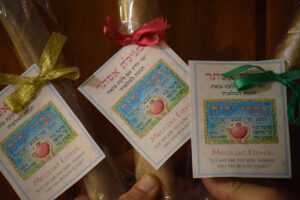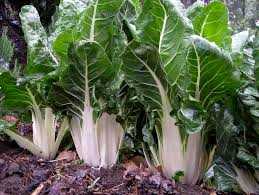Sunday and Monday are Purim! In order to allow our office crew and delivery staff to prepare for Monday deliveries, the order system will close for changes (for Monday deliveries) on Thursday evening. Please make your changes by Thursday at 8:00 pm.
Monday deliveries for Mevasseret, Modi’in and Ramot will arrive on Tuesday, March 14th!
_______________________________
“Is it not for this very moment that you became queen?!”
In honor of Purim, Mipri Yadeha is delighted to present Megillat Esther: all-natural fruit leather scrolls in select flavors, perfect for holiday food exchanges and a sweet reminder of what one brave woman can do! (Only 10 NIS apiece!) place your orders via our order system.
_______________________________
“Flowers appear on the earth; the season of singing has come…” The team at Minhat Ha’aretz is already gearing up for the month of Nisan and their unique Matzah baking.
Whole spelt matza– Shmura L’mhadrin from the time of harvest!!! 195 Nis per kg (15-17 pieces)
Organic Israeli whole wheat matza– Shmura L’mhadrin from the time of harvest!!! 135 NIS per kg (15-17 pieces)
This is a limited run, so please make your orders on time. Email or text us with your orders by Purim. Final deadline to place your order: This Friday, March 10
The matzah will be sent to you over the two weeks preceding Pesach (last week of March, first week of April).
______________________
Beeting to Its Very Own Drum
One of my most Purim-associated vegetables is the beet. In our childhood theatrical days, when we faked a bad injury, the wound would ooze beet juice. Or a blood-loving vampire would appear on stage, beet juice streaming from the sides of his/her mouth. A princess would dab a sliced beet on her lips for lipstick. And for our innocent “reality shows,” one of my first childhood memories is having beets for lunch and then gathering together all my kibbutz kindergarten classmates in the bathroom with our heads huddled together to marvel at our red urine…
So this week, in honor of the upcoming Purim festival and this wonderful vegetable returning to your boxes after a short break, it’s time for some beet flattery. In the spirit of the day, this week’s Newsletter will be illustrated by some unbeetable slogans.
The first half of the annals of Beet History is actually the history of Swiss chard, its immediate relative and possibly even its older brother. Their common ancestor is probably the wild beet which grows along the Mediterranean area, whose leaves and stems were gathered as an early source of food. Naturally, the first farmers to deal with the beet attempted to cultivate a plant that yields large leaves and wide chubby stems, i.e., the Swiss chard. These farmers were probably Greeks and Romans living along the Mediterranean shore, and one hypothesis holds that the family received its name “beta” because its seed pod resembles the Greek letter Beta. Hebrew for beet, Selek, derives from the Arabic Salak.
The beet root became edible around the second or third century. The first beet root recipes for the Roman kitchen appeared around that time, some touting such praise as “better than cabbage!” In the beginning, only young wild beet roots were gathered and cooked, and only in the 16th century do documents appear attesting to the existence of a genetic mutation in the seeds that arrived from Italy to Germany and created: the beet root. To this day, one of the beet’s nicknames is “Roman beet.” Still, even during this time, it was a scarce vegetable in Europe. At the start, it was only used medically. The red beet was known to be beneficial in treating amebic or bacterial dysentery, internal wounds, nasal congestion and hepatitis. Only in the 19th century did its culinary virtues gain recognition.
The Chenopodiaceae family seeds deserve a few words as well: the beet or Swiss chard seed is in reality a collection of seeds tucked close to one another inside the dry fruit. Thus when seeded, it will grow a number of sprouts at once, meaning they must be thinned upon sprouting (some seed companies separate the collection of seeds and offer single seeds in order to allow accurate seeding and reduce the need to thin. But we go with nature…). Where there is no opportunity to thin the sprouts, the immediate results will be 10 cm-high plants whose leaves are ready to be cooked or placed in a salad. Usually the seeds sprout slowly, each with its own rhythm, over a long period of time, creating beets of various age and size. Thus, when we harvest them, we basically scan the entire bed and pull out the biggest roots, allowing more space for the remainder of the crop to grow.
In popular medicine called “like cures like” (similia similibus curentur), the belief is that plants represent their medicinal use by their shape, color or resemblance to body parts. The red beet is considered a remedy for treating blood circulation. Contrary to the purple color of other vegetables (cabbage, onion, eggplant, lettuce, pepper, basil, etc.), the purple in the beet is quite unique. Its origin is in the purple pigment category “betalain,” which contains strong antioxidant qualities and excellent capacities to battle cancer and heart disease. The beet also contains salicylic acid, an aspirin-like compound which is anti-inflammatory and contributes to the health of blood vessels and the heart. The beet is considered one of the “cleansing” vegetables which is highly beneficial for the liver, kidneys, and even swollen legs and constipation.

Unlike the internal cleansing qualities of the beet, the external experience is quite the contrary. The beet cells are unstable and they “leak” when you slice or peel the root. Cooking stabilizes the cells, which is why cooking the beet within its peel will reduce the staining. These pigments stabilize under acidic conditions, thus making pickling your beets a good (mess-preventing) idea. But beets color things other than your hands. We all know the red beet-dyed horseradish. Natural coloring extracted from beet is used as a popular food dye for pizza “tomato” sauce, pink lemonade or edible ink (the kind you might use to print on slices of meat).
Beets are usually round and red, but not exclusively. They come in many colors and shapes, ranging from striped to yellow, white, and purple. And you’re already acquainted with the elongated Chubeza beet alongside its roly-poly brother.
Despite the fact that it is a vegetable with high sugar value, and perhaps because of that fact (even higher than carrots and sweet corn), the beet is a good friend of weight watchers, containing only 30-40 calories. In addition, it is rich in folic acid, vitamin C and potassium.
Another relative is a white-root beet – the sugar beet. From the time that the Crusaders returned from their journeys, they craved the sweet flavor of the sugar they knew and loved. But sugar was an expensive commodity, imported to Europe via sea dwellers or roaming merchants. In 1747, German chemist Andreas Sigismund Marggraf succeeded in extracting a small quantity of sugar from a beet root, then used as animal fodder. However, the process was highly labor-intensive, and the sugar content in beets was low. One of his students, Franz Achard, was more practical. He realized that if you want to extract more sugar from your beet, you just have to create sweeter beets. He then crossbred white beets and created the father of the modern sugar beet:
Tips:
- To store beets: trim any greens (the greens pump the root dry of its liquids, like the carrot or radish), allow three centimeters of the stem, and do not cut the root. Store the beet in the vegetable drawer of a sealed container and wrap the greens in a towel and plastic.
- In order to prevent “bleeding,” don’t cut or peel the beet prior to preparation. After cooking, steaming or baking, it will peel very easily.
- Adding some vinegar to the cooking water reduces the smell of cooking beets and allows them to keep their color. The cooking creates a clear beet stock which can be used for food coloring (like for rice,p’titim or couscous). Beets are naturally high in sodium, thus no salt need be added when cooking.
- When baking beets: to prevent staining, wrap in aluminum foil. It is best to add some kind of preferred seasoning, i.e., garlic, lemon slices, cumin or coriander seeds. The flavor penetrates and enriches the beet as it bakes.
- Beets can also be microwaved: pierce an unpeeled beet with a fork (to allow the steam to escape), place in a microwavable bowl, add a bit of water and heat uncovered for 4 minutes per beet, till soft.
- After the beets are prepared: to clean your hands of beet stains, rub with wet salt and lemon juice, then wash with soap and water.
- When our beets come with greens, don’t trash them! Use the greens like spinach or Swiss chard for a great semi-sweet flavor.
————————————
And on a more serious note, we send our sincere condolences to Mohammed, Ali and Majdi on the death of Mohammad’s father and Ali and Majdi’s grandfather. May you know no further sorrow.
Wishing you a wonderful week and a joyous Purim!
Alon, Bat Ami, Dror, Yochai and the entire Chubeza team
___________________________
WHAT’S IN THIS WEEK’S BOXES?
Monday: Parsley/coriander, lettuce, beets/kohlrabi, cucumbers, cabbage/ broccoli, cauliflower, tomatoes, peas/ fava beans, fresh onions, potatoes, carrots.
Large box, in addition: Leeks/scallions/fresh garlic, kale/ spinach/Swiss chard/broccoli leaves, celeriac.
Wednesday: Parsley/coriander, lettuce/mizuna, beets/kohlrabi, cucumbers, cabbage, broccoli/cauliflower, tomatoes, cherry tomatoes/fava beans, fresh onions, potatoes, carrots.
Large box, in addition: Leeks/celeriac, kale/ spinach/Swiss chard/broccoli leaves, peas.
And there’s more! You can add to your basket a wide, delectable range of additional products from fine small producers: flour, fruits, sprouts, honey, dates, almonds, garbanzo beans, crackers, probiotic foods, dried fruits and leathers, olive oil, bakery products, apple juice, cider and jams, dates silan and healthy snacks and goat dairy too! You can learn more about each producer on the Chubeza website. On our order system there’s a detailed listing of the products and their cost, you can make an order online now!








